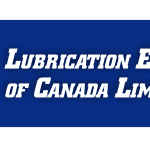
Temperature Cycling Testing in Practice
Abstract
Andre and Fred discussing some best practice, failure mechanisms and problems when’d temperature cycling testing.
ᐅ Play Episode
Your Reliability Engineering Professional Development Site

Andre and Fred discussing some best practice, failure mechanisms and problems when’d temperature cycling testing.
ᐅ Play Episode

Carl and Fred discuss key process characteristics, what they are, and how to identify and use them in reliablity programs.
ᐅ Play Episode
by James Kovacevic Leave a Comment

Oil analysis is a very important part of any lubrication program. Oil is an essential ingredient for your equipment and provides a strong bottom line. When there are contaminants in your oil, your equipment fails more often than it is supposed to. That means you have to get more spare parts, buy more lubricants and deal with increased downtime. When the condition of your oil is good—that is where the oil analysis comes in for making sure it is—your machines work properly. In a result, you save a lot of money by purchasing the right amount of oil.
ᐅ Play Episode

Carl and Fred discuss the subject of key product characteristics, why they are important, and how to identify and use them to improve reliability.
ᐅ Play Episode
by Tim Rodgers Leave a Comment

Tim and Fred discuss the feedback loop that connects field performance to the production processes at the supplier, and how advanced sensing technology provides more data to all parties, but doesn’t necessarily lead to greater knowledge or improved reliability.
ᐅ Play Episode
by James Kovacevic Leave a Comment
When it comes to reliability modeling, there are a lot of variables involved that you need to look at before you go into the design phase. It is not possible for a human mind to make all these statistical calculations and run analysis—varying from simple to complex data analysis. That is where a reliability modeling software is needed. Now there are a lot of software available in the market for different purposes but you need to be clear about your needs first. The software assists you by running simulations based on different models.
ᐅ Play Episode
by Tim Rodgers Leave a Comment

Tim and Fred discuss some of the strategies used by companies to enlist the support of their suppliers to address quality problems and generally improve product reliability.
ᐅ Play Episode
by Adam Bahret Leave a Comment

Adam and Fred discussing the dilemma of too much data in an organization and not enough for reliability work.
ᐅ Play Episode
by Fred Schenkelberg Leave a Comment

Tim interviews Chris concerning the academic work concerning decision making being built into autonomous vehicles. [Read more…]
by Aaron Spearin Leave a Comment
Intro: Welcome to the E6S-Methods Lean Six Sigma Performance podcast with Jacob and Aaron, your weekly dose of tips and tricks to achieve excellent performance in your business and career. Join us as we explore deeper into the practical worlds of Lean, Six Sigma, Project Management and Design Thinking. In this episode number 181, we speak with reliability expert, Fred Schenkelberg, and get his take on the day in the life of a reliability engineer. [Read more…]
by James Kovacevic Leave a Comment

Ever wonder why your assets aren’t producing the value they are supposed to even if you have trained staff and big budgets? Are you a fan of Predictive maintenance improvement of your organizational processes? Then, condition monitoring is where you should start. The meaning of this word is as simple as the word itself. You just need to check the state of your asset on a regular basis and as the state of your asset change, you would know what possible failures that change can lead to and then you can try predictive maintenance strategies to stop that failure from occurring in the first place.
ᐅ Play Episode
by Adam Bahret Leave a Comment

Adam and Fred discussing the benefits of treating failures as nuggets of wonderful information.
ᐅ Play Episode

Kirk and Fred discussing the recent article Kirk and comments posted on LinkedIn regarding the estimated maintenance costs required for the F-35 Fighter Jet.
ᐅ Play Episode
by James Kovacevic Leave a Comment

The presence of women in different industries is a growing fact that cannot be denied. They are now involved in fields—from management to engineering—that were considered solely to be men’s and they are doing these jobs incredibly and competently. There are a very few platforms that emphasize on empowering the women and providing them with content that they need to get better at their jobs and be a valuable asset to the organizations they work for. Still, there is a large number of women who are making transitions to more technical jobs and WiRAM is one of those platforms where women can get the educational content and training they need to handle the asset management work and get ahead in the reliability and maintenance industry.
ᐅ Play Episode

Kirk and Fred discussing the issue of derating components to increase the reliability of the larger system. Although Fred and Kirk agree on most reliability topics, derating by the traditional reliability guidebooks is not one of them.
ᐅ Play Episode